How to insulate house walls from the outside
Adding extra insulation to the exterior walls of an older home when renovating or remodelingis a great way ofimproving a home's walls thermal performanceand reducing energy use while reducing heating bills, carbon footprint and improving a building's comfort level. It may look easy to go buy some packs of rigid insulation panels down at the local hardware store and screw them to your walls, but unless you understand how your existing walls are built and how they "work" in terms of keeping moisture, heat and cold where they should be for durability, the insulation panels might not be the only things you're screwing up!
Adding insulation to the exterior of a home correctly starts with establishing what climate zone you are building in and how the existing wall is built to make sure you are not creating a condensation point at a dangerous place within the wall assembly, or preventing internal moisture from the occasional leak in the exterior skin from running away, so the wall structure can dry out.
Walls need to be built to meet their specific climate needs. All too often ‘the best wall assemblies’ migrate from their own climate to one where they do not belong, like puttinginterior vapor barriers on homes with aircon in hot humid regions, which simply should not be done if you want your house to last.Durable, healthy and sustainable homes need careful research and planning- as changing one element without considering how this changes the dynamics of the building envelope is a potential recipe for disaster.
The best pre-emptive strike against the possibility of a nightmare exterior wall renovation and insulation project is educating yourself - so you don’t get talked into the wrong wall system by a poorly-informed general contractor. Start by watching our ‘building science made easy’ video below.
What is the right amount of insulation for walls?
Determining your climate zone will help decide on an appropriate amount of wall insulation for your home, whether you are in a heating or a cooling climate. Next, compile a short list of the types of insulation that best suit you by determining what your biggest concerns are. Consider some of the following: Cost, durability, fire-resistance, insect-resistance, low GWP (global warming potential), made with recycled materials, made with natural materials, which ones are best for sound proofing, or for reducing off-gassing to protect indoor air quality.
See our page onchoosing the right building insulation for the right application
一旦您确定了想要安装在外墙上的保温材料的大致数量和您愿意使用的保温材料类型,那么您需要找到一种方法,以保持其r值或保温质量的方式将其安全地安装/应用到外墙上。
How to avoid thermal bridges when fixing exterior wall insulation in place
For insulation to work properly on exterior walls and have a long functional lifespan, the wall system needs to have all the appropriate components, including an air barrier, a vapor barrier /vapor control layer, well balanced insulation, and be attached in a way that doesn’t compromise the R value of the insulation. But you already know that from the building science video right? Didn’t think there would be a test so soon did you ??heh heh…
Here is a page onthermal bridges: what they are and how to break them in buildings
But for those not clicking their homework assignments, here’s a quick summary – metal is a conductor, and when you have metal that passes from one side of a wall to the other, you have a thermal bridge, which is a path for heat to leave your home, and money to leave your wallet. To those of you living in Toronto or New York in older homes, this also applies to the elegant brownstone rowhouses, townhouses, and tenements that were built over a hundred years ago from brick and stone - neither of which are known for their outstanding insulating properties either.
当然,我们都想在尽可能减少碳足迹的同时限制能源的使用(和损失),所以在翻新和升级外墙时,要注意你固定任何隔热层的方式——因为在一个完美的外墙组件中,保温层应该是连续的,不受热桥的破坏。以下是一些提高老房子保温水平,成功贴合外墙保温的方法。
Larsen trusses with cellulose or batt insulation
A Larsen truss wall is one with engineered I-joists attached to the outside of a stud or brick wall, which then creates a cavity that can be filled with additional insulation. You can add batt insulation, dense pack cellulose, rigid insulation panels or spray foam if you choose (spray foam is our least favorite but it can be done so we mention it, though we always encourage readers tochoose spray foam with the safest blowing agents)
Larsen truss walls can be made in a variety of thicknesses, which is a really nice advantage to the design as it can be done in a way that has the best return on investment for any climate. Below is a photo of aPassive House using Larsen trusses on the exterior of the wall (see video), that will then be filled withdense-packed cellulose insulation.

回到热桥——木材确实起到了热桥的作用,但没有金属那么重要,而工程i型托梁,只有5/8英寸,木材的导电性不是一个大问题,而且越深就越不重要。
Fiberglass thermal spacers or "Cascadia Clips"
The purpose of fiberglass insulation fasteners is to attach the clip itself to the frame, which then supports and secures the insulationwith a material that has a low conductivity to avoid heat loss, fiberglass clips also provide a solid surface for fastening strapping (furring strips) and exterior cladding.
Cascadia Clips from Cascadia Windows in Vancouver are the biggest name in fiberglass thermal spacers you will find across Canada and the U.S. so the concept has in a way adopted the brand name, but there are others brands of wall insulation thermal spacers such as Armatherm Z Girt available, pictured below.

Also, if installing a final finish to exterior walls over additional wall insulation, see our page onhow to install exterior siding so walls can dry.
Attaching insulation with metal screws
Above are a couple of ways to attach exterior insulation and maintain the highest possible R value by breaking thermal bridges, but the reality is that most exterior insulation is going to be a few inches of rigid insulation boards screwed or nailed to a wall with strapping. It’s not perfect and it does reduce the overall performance of the wall, but it’s not the end of the world, so don’t panic if you’ve already done it or are planning on doing it, we’re just trying to outline best practices.
We built ourLEED V4 Platinum Edelweiss Houseusing rigid Rockwool or Roxul insulation panels attached with strapping and screws (which is in the building science video above), and what we did to break the thermal bridge was to do it in 2 layers of 4 inches of rigid Rockwool so there would not be a single screw passing through the wall assembly.
它在能源效率和耐用性方面做得很好,尽管这不是我们所说的最有效的时间利用,因为做两层而不是一层意味着双倍的工作。事后看来,我们不太可能重复这个过程,但这就是我们学习的方式!You can see the whole Edelweiss LEED Platinum v4 certified Demo House being built in ourYouTube green building video series.
我们喜欢的一种替代的“主流”系统是ThermalWall PH面板,用于在外墙上粘贴刚性外保温材料,避免热桥。它是一个刚性的EPS泡沫保温板,有不同的厚度,这本身并不是一个新的概念,但有趣的部分是如何简单和快速安装。它最初是Legalett发明的,作为一种有效的方法,可以将外墙总r值提高到被动屋标准,轻松地将符合标准规范的R-24墙提高到R-52高性能包围线。
就连《树抱者》杂志的劳埃德·奥尔特在审查该系统时也写道:"there are some serious advantages to foam that can make a TreeHugger think twice, especially when one is talking Passive House, where one needs a lot of insulation and avoiding thermal bridges is a very big deal....关于泡沫隔热材料,我确实经常口吐白沫,而且一直在推广替代品。但这个系统确实提供了一层连续有效的隔热层……屋顶。它也会非常密封。It is such a simple system that makes a very good case for the stuff" which we agree with.
面板内嵌有镀锌金属轨道,当“快速轨道”被拆除时,金属轨道露出来。从那里,你可以把它螺丝到一个螺柱墙或进入砖石,然后你更换snap轨道和固定你的外部捆扎到相同的金属轨道。

这里的优点很多——面板厚度在4.5英寸到8英寸之间,外部绝缘是连续的,它们可以用4到6英寸长的6英寸10号螺钉连接。有一个将面板连接到墙壁上的中心螺钉和一个将外部毛条连接到轨道上的单独螺钉可以打破热桥。另一个好处是,这种长度的螺钉仍然是相当便宜的。根据经验,超过6英寸长,就需要1 / 4英寸直径的桁架头螺钉,它们开始变得非常昂贵——当隔热大型外墙区域开始增加成本时。
We realize that the mere mention of any kind of "Styrofoam" or foam insulation (ThermalWall PH is made with EPS / Expanded polystyrene) can upset the sensibilities of hard-core environmentalists, but it is worth keeping in mind that EPS insulation panels are mostly made of air, it is recyclable, the plastic content is a petroleum byproduct rather than primary material and it could be plant-based if it weren't for cost and the carbon footprint of doing so, and it works well when you use it for the right applications. It’s not "perfect", but then what in the building industry is? We've found that EPS's reputation as somewhat of an environmental "no-go area" is often based on a misunderstanding of what it is, and isn't, so we'd recommend remaining open-minded until you've got all the facts.To get a quote for ThermalWall rigid foam insulation panels, see here.
Even the greenest natural home insulation products have a carbon footprint of some kind, for example a strawbale house orstraw insulated SIPS panelshas diesel fuel in its history from fertilizing, irrigation, harvesting and transportation. And a lifecycle analysis of EPS (expanded polystyrene) insulation is not nearly as a bad as its reputation in some quarters of the green building industry would have us believe - but then a lot of the problem is it's usually thought of as Styrofoam in North America - which it may surprise you to learn it most definitely isn't. Just putting that out there, but we always welcome (friendly) dissenting voices and discussions in the comments section below!
The risks of condensation when insulating walls
The most important thing to remember when insulating exterior walls during renovations, is to be sure not to trap moisture between two vapor barriers. If a home already has a vapor retarder or vapor barrier, it’s important not to add another vapor-impermeable layer on the opposite side of the wall that could trap moisture in the middle along with organic materials such as insulation or wood framing members.
Some rigid insulation boards have integrated air barriers, some have vapor barriers, some have both and some have none. Some insulation panels (like EPS, XPS and polyiso) can act as a vapor barrier, which can be a good thing or sometimes a bad thing, so be careful!
This is why insulating exterior walls can sometimes go terribly wrong when "poor" insulation products are chosen for any given application. Don't just walk into a building supply store and pick the cheapest rigid insulation panel, that could be a disasterously expensive decision. This page will help explain:
The differences between Polyiso, EPS & XPS & Styrofoam
This is why deciding on a wall assembly for renovations has to be considered carefully to ensure that walls are able to dry out. Be sure to either have your wall assembly designed by a professional, but better still, get an understanding of the science behind it yourself, that way you will be able to spot anything that seems fishy with enough time to change it. Check out some of the links below, and if you have any questions that aren’t answered theylook in our discussion forum and maybe ask a question of your own here.
Now you know more abouthow to insulate house walls from the outsideand the pitfalls to avoid...Find more pagesabouthow to build energy efficient and durable walls here:
Find more about green home construction inthe EcoHomeGreen Building Guide pages |


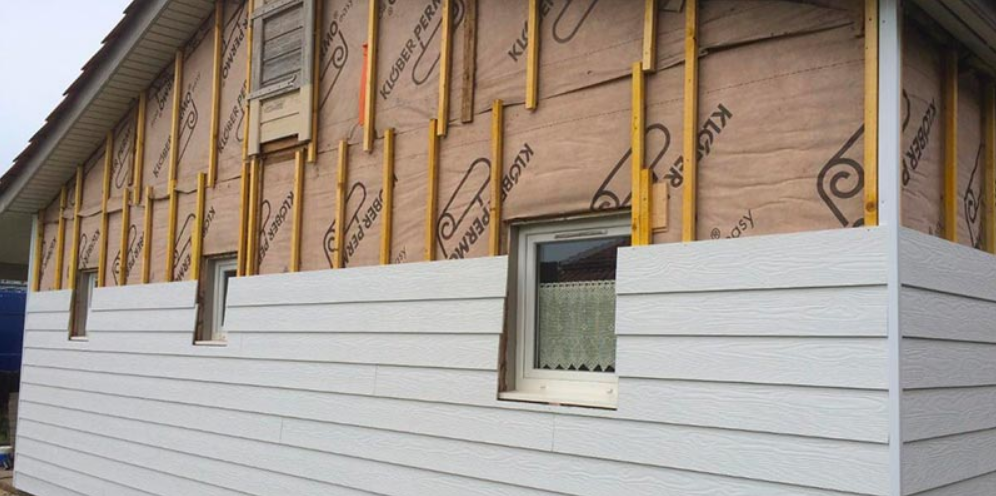















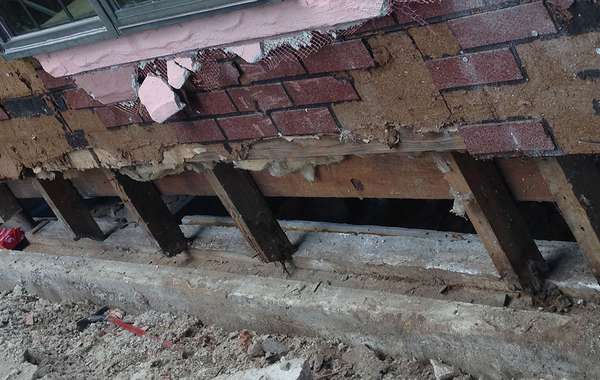
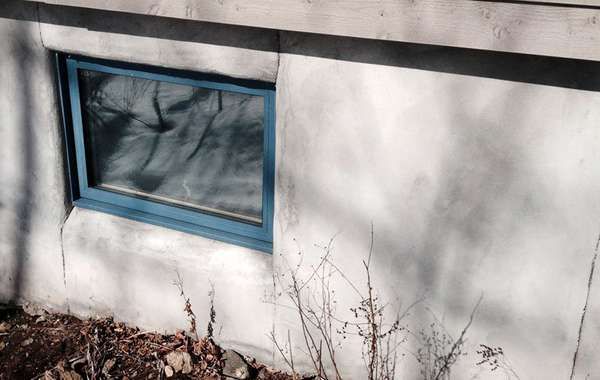
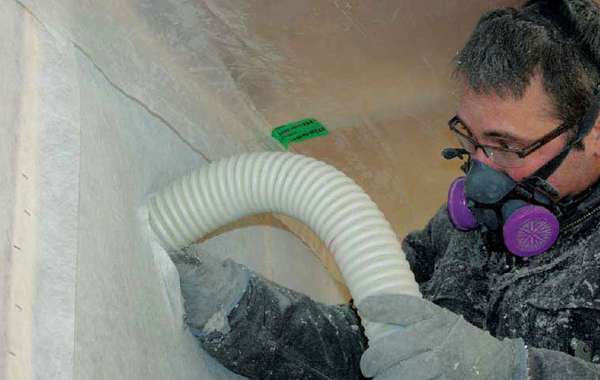
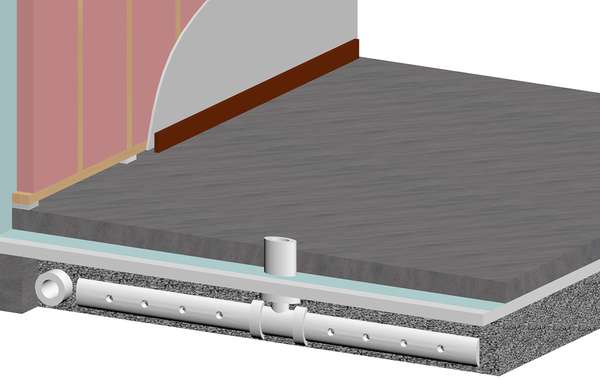
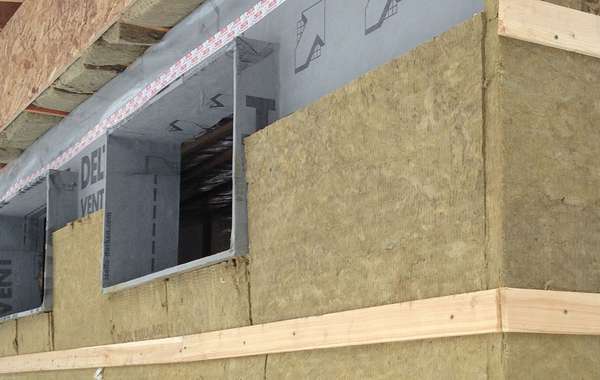
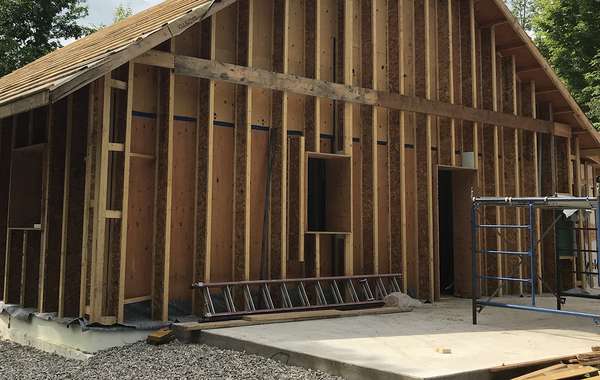
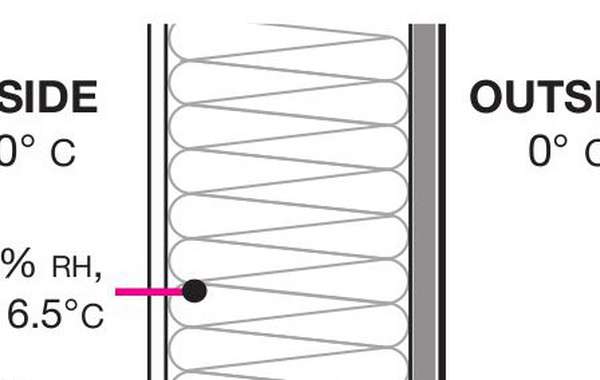
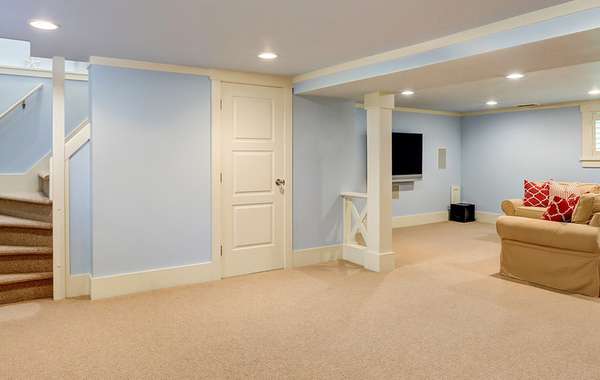
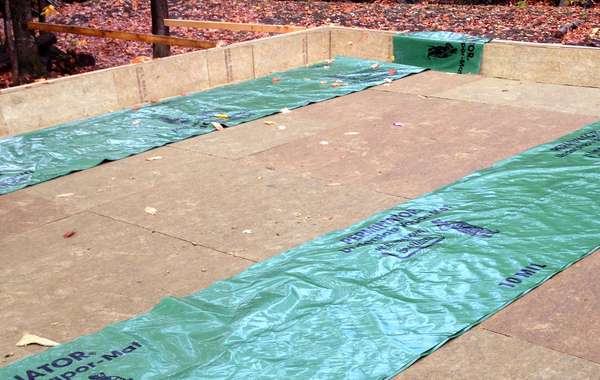
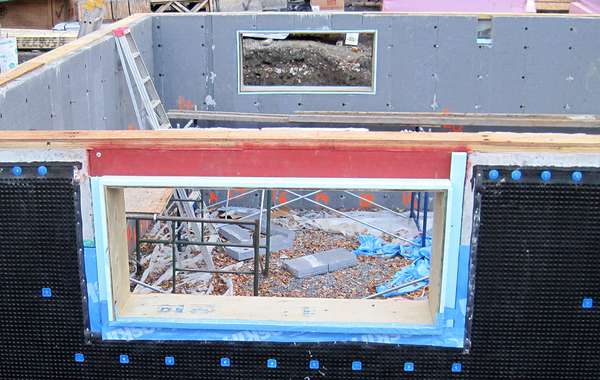
That double-strapped two isulation-layer wall looks like it would a nightmare to get a flat surface on the outside to side onto.. Is it?
Do you mean the one with the double layer of 4-inch rockwool panels? If so, I wouldn't say it was a nightmare, but it did require a bit of effort. If you drove a screw too deep it would for sure bend the strapping, so what we did was put a straight edge on it when it was installed and adjust it a bit to make sure it was straight, we drove some screws in a bit and backed a few out. Definitely a step we didn't anticipate, but all said and done it wasn't too time consuming, it may have added 2 hours or so of time to the whole place. Still - it works great, but it's not a wall assembly we would repeat given the other options out there, including some stuff that has hit the market since we did that.
I was really impressed with your Edelwiesse wall system video. But like you said, you always learn something new. You mentionned that one of the alternatives that you like is this ThermalWall PH. What are some of the other new wall systems you're a fan of.
We live in Palm Springs Ca in a brick home built in 1948. The exterior brick is also the interior brick. We need to insulated because of the rising electric costs becaus of the summer heat. Which would be more effective, a new roof with sufficient insulation or try to insulate the brick from the exterior?
That is a very difficult question to answer Ray, but I will try to give you variables to consider. If you have an attic where you could insulate with something likeloose blown cellulose insulation,这将是相当容易和负担得起的,但如果你有一个大教堂的天花板,没有阁楼的空间,那么你需要建立和创造一个全新的屋顶。在这种情况下,成本会呈指数增长。
在一个理想的世界里,你会做所有的事情,屋顶和砖的外观,所以这真的完全取决于你的预算。从长远来看,给房子隔热肯定会省钱(假设房子的状况相对较好,并且会在未来很长一段时间内屹立不倒,但从这方面来说,要多久你才能看到投资的回报是不可能的。你可以从几个总承包商那里得到一个报价,看看他们提出的成本,如果你想,你可以考虑做一些能源模型,看看是否值得投资。
We live in Australia. Just insulating house now. Old house, solid brick, truss steel roof.
I realize Palm Springs Ray typed last year.
Solar panels shade the roof on direct sun side. Reduces electricity costs via a natural insulation as well as being a generator solar powered. I'll be installing soon.
I don't think I can afford a verandah which envelopes the walls with shade and reduces internal cooling costs significantly. Probably hanging shade cloth instead.
Our weather dry. Our city is capital of driest state on driest continent on earth. Cold is bone cold due to dry. Hard to explain but when in Europe I was T-shirt at 0℃ and okay with that yet dry 5℃ is very cold.
I'm just renovating now. Insulation seems like first job. I'd love ideas regarding my walls.
我用合金网盖住下呼吸孔,防止老鼠季节性地从田地里迁徙到我家来作为它们的庇护所。还有低矮的墙真的很容易做。我在想,我将钢板顶部的砖工作,这样提供一个坚硬的二级屏障。用旧栅栏铁皮做钢板。考虑到绝缘问题,人们认为砖中的空气间隙会帮助绝缘工作。空气没有通过。无论热或冷的环境都不会流过第二层(砖的背面)。
Breathers remain yet flow is removed.
Ceiling is batts, under roof is foil roll.
Decent door seals too brother.
At 45℃ heat outside. Other house had no air conditioner running. Fresh breathable air less than half outside temp. The doors are sealed to prevent draft.
On really hot days, maybe half hour with air con and house stays cold.
Most days just open up when cool breeze on, let house cool itself and seal off.
Doors lose a lot due to draft otherwise. Windows too.
Lastly.
A simple fan of much less electricity than an air conditioner with compressor can circulate within to keep air fresh.
假如闷成,可以破门而入或开窗换气。在你控制的时刻失去效率。
Mike, appreciate your site and commentary. I have an aquaintance who is totally rebuilding a 1960's/70's era home in Victoria BC (wet, damp winters, dry summers) and has totally stripped the walls inside and out so is down to the 2x4 studs. He's starting to put Tyvek on the outside wall and I've suggested he look at adding insulation from the outside as well as putting rockwool in the inside. Back in 1986, I built a new home in Winnipeg and used R20 fiberglass batts between the 2x6 studs but then added a product called GlasClad (2" ~R8 I think) on the exterior which once the Tyvek and tar paper and stucco was added gave me around R30 walls and BaseClad (2" R8) on the exterior of the basement walls which were eventually filled in below grade and stuccoed above ground. This 1700 ft sq home, which was also passive solar, only cost us about $375 per year to heat with gas hot air furnance and hot water. Sadly we only got to enjoy the home for a couple of years and then ended up moving, but the subsequent residents all really enjoyed it's comfort and efficiency. I've not seen it in a decade but it still looked great then.
These "clad" products were fibreglass boards, not batting, and I've not seen them around for years. Are they still available or is their a rockwool substitute? I'm reluctant to recommend the blue or white styrofam as I would not want a vapour barrier on the exterior walls which could cause a dew point in the wall cavety somewhere. (I even question Tyvek on exterior walls in Victoria because the walls have to breathe and if they don't - well you've heard of the Leaky Condo phenomen, buildup of black mould in the walls. Perhaps Tyvek has sufficent "breathing rate", I just don't know?)
What do you think?
Is there an insulating board that could be installed outside? (he's already installed the windows so I suspect he would not want to go with batts on the exterior wall which would make really deep window wells). If so what, and would a 2" R7 or R8 work? I'm not sure what he'd going to finish off the exterior walls with. Might be stucco or perhaps Hardiboad. I suspect either might need some horizontal strapping in which case he could run 2x3's vertical or horizontal and put the rockwool boards in between the strapping?
我们的家,1967年拆层,2x4墙。我们的墙壁是灰泥和垂直雪松覆盖层的结合,我想重新改造我们的房子,以进一步减少在寒冷的日子里的热量损失——这不是一个经济的项目,因为能源成本很低。我可以把一个产品像我们的旧玻璃涂层或任何可以在板下面,但不知道是否有可能只是把相同的覆盖在灰泥上面,只是重新灰泥覆盖它所有?Thanks
Don
Great information on how to insulate exterior walls of the existing homes from outside. Very Insightful.
对于保温墙刚性泡沫保温-什么样的饰面墙板可以用于这种泡沫应用…?
The "Performance Wall" video is very good and I have two questions...at the bottom of the new exterior insulated wall, How would that be finished? as it will protrude from the existing wall and just be hanging in the breeze. - Question 2 - Are those long screws strong enough to carry the load over time once the siding is installed...? Thanks in advance great website!
I find I hard to buy into any improvements will begin to pay for themselves over time. In Ontario Canada our electric rates have more than doubled in the last ten years. The government is not in business to lose money. Grants or incentives will have to be payed back in some form. If every home in Ontario cut energy cost by 2500 $'s per year the utility will go out of business (this wont happen). In time any savings will be gobbled up by increase in rates. I expect by 2030 they will double again maybe more and if I'm still alive in 2050 not sure how I will afford net zero energy to survive. Effectively I think all improvements will achieve is freezing rates for a period of time until they strech again beyond affordabilty where I think the rates are currently. I foresee no change in affordable rates plus the added debt of the reno's. I hope all this madness works out for everyone! Most people I know have invested in a home as income for retirement - I think net zero effectively will change all this for most people in this situation....
Hi Gerry, I see where you're going with that, but I don't think the end result is what you think if homes use less energy.
If the province saves energy, the province and everyone in it wins, full stop. This investment helps reach climate change goals, it reduces air pollution, save on health care costs, etc. And if there is an abundance of energy around due to it not being used by Ontario residents, then it will be sold to other provinces or states. Money given to homeowners to repair homes also stimulates the local economy by job creation. There are endless spin off benefits, and using less energy is always a good thing.
If others insulate, and cut their usage, and the govt increases rates, their rates stay the same, but yours go up.
its in your benefit to insulate whether rates rise or not.
Good afternoon I am reading the cement about how to insulate a house from the outside I live in Connecticut where it's cold I just bought a house built in the 1900.?iam about to install new siding what is the best way to insulate it from the outside.
Hi Mike,
Similar question to the last comment and I think like many others, we have a 30 yr old house in the Northeast (NH), 2 x 6 walls, fiberglass batting with the brown vapor barrier against the back of the Sheetrock, 1/2" plywood then cedar siding which constantly needs repainting. Plus our wooden molding and window sills are starting to rot. We're planning to completely replace it all with new windows, composite siding & molding.
既然我们现在有机会,你建议如何增加额外的绝缘材料?与胶合板相比,刚性泡沫隔热材料似乎是一个不错的选择,但它需要允许气流,对吗?
Then install the new composite siding over that?
Thanks....
AD.
Hi Andrew
If you are taking the outside right back to the plywood, I think the biggest energy efficiency upgrade you could do at that point would be to install an air barrier to make it airtight, here is an example of anexterior peel and stick airtight membranethat is somewhat vapor permeable. You could install rigid insulation over top of that. I would also look at this page here aboutwhich is the best right rigid insulation所以你会找到合适的产品。有些会留住水分,有些会让水分流失。矿棉保温材料可以让水分通过泡沫保温材料将它困住。
And finally,请看这一页关于如何安装壁板,使墙壁可以干燥。